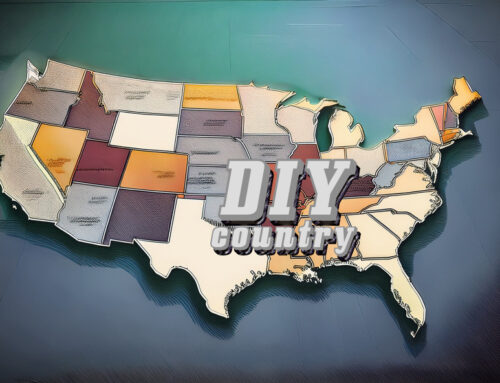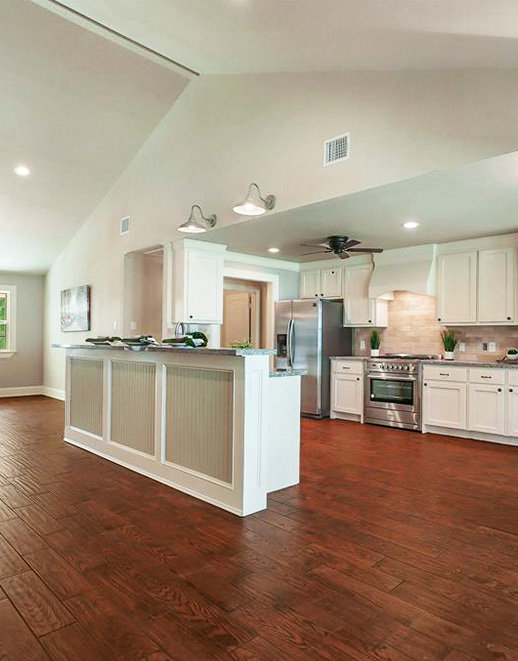Why Pre-Engineered Beats Pre-Fab Every Time
 If you’ve been shopping for a new home lately, you’ve probably seen the terms prefab and pre-engineered tossed around like confetti. They might sound similar-after all, they both involve building something faster than traditional construction—but when it comes to flexibility, cost, and DIY-friendliness, they’re not even in the same ballpark. And at Budget Home Kits, we’re proud to be firmly on the pre-engineered side of that fence.
If you’ve been shopping for a new home lately, you’ve probably seen the terms prefab and pre-engineered tossed around like confetti. They might sound similar-after all, they both involve building something faster than traditional construction—but when it comes to flexibility, cost, and DIY-friendliness, they’re not even in the same ballpark. And at Budget Home Kits, we’re proud to be firmly on the pre-engineered side of that fence.
Prefab or Pre-Engineered: What’s the Difference?
A prefabricated home is built (mostly or entirely) in a factory, then shipped to your property in large sections—or even as a complete unit. That means big shipping costs, specialized transport permits, and sometimes even a police escort down the highway. Once it arrives, it’s usually set in place by a crane and tied into utilities with little-to-no on-site customization possible.
A pre-engineered home, on the other hand, is shipped as a kit of precisely designed, pre-cut parts—ready to be assembled on site. You get all the benefits of engineering precision without the logistical headaches of moving massive house sections down the interstate. And some pre-engineered homes (including those from Budget Home Kits) still allow some customization on-site, including exterior finishes and door/window location even up to the day of installation.
Why Pre-Engineered Is Best for DIY Builders
1. Transit-to-Site Size
With prefab, your home has to fit the size and clearance limits of highway transport. Pre-engineered kits? Not so much. Your kit ships in manageable bundles, so you can build on hard-to-reach sites, narrow roads, or remote properties that a prefab truck wouldn’t dare approach.
2. Lower Shipping Costs
Transporting oversized prefab sections is expensive—often thousands more than flat-packed kits. According to multiple industry averages, just transportation and on-site crane costs can add 5-15% to a prefab home’s total price. Pre-engineered kits ship like regular freight, keeping delivery costs predictable and affordable. And because it’s unloaded in smaller component bundles, it can be off-loaded without heavy, expensive equipment.
3. Easier Permitting
Prefab homes sometimes fall under modular home codes, which can complicate local permitting—even in rural or unincorporated areas. Pre-engineered steel kits, like ours, are framed on site, meaning they’re generally treated like conventional construction by local building departments. That’s one less bureaucratic headache for you. Not to mention that a stronger, built-on-site home is often less expensive to insure than a prefabbed home, as well.
4. True DIY Potential
A prefab home arrives… and then you hire a crane crew, set the sections, and bring in pros for final connections. With pre-engineered, you can actually take part in the build from day one—no cranes, no massive rigs, just a manageable kit and clear instructions. Is that important to you? Because on our experience, nearly 70% of homeowners nationwide now prefer to tackle at least part of their home build themselves for savings and customization.
5. Material Quality and Strength
Not all, but many prefabricated homes (including modular homes, mobile homes, etc.) use very low-grade materials to save on costs. This results in a final home built with low-quality, fast-deteriorating, and/or structurally inferior components in many cases, which also depreciates in value with each passing year. Contrast that with a site-built steel home, pre-designed for additional strength. With our DIY kits, you get only high-quality #1 American steel for the dried-in structure and the flexibility to finish the inside with the quality and standard you desire— a home that will appreciate in value over time.
Budget Home Kits: Pre-Engineered Done Right
Our steel home kits are engineered for strength, precision, and ease of assembly—whether you’re building on a city lot, a mountain ridge, or somewhere your GPS barely recognizes. You get:
- Proprietary pre-cut steel framing designed for DIY assembly
- Detailed construction drawings and labeling for every component
- Phone and email support when you have questions mid-build
- Flexibility to customize layouts and finishes without altering the core structure
What’s the Final Conclusion?
Prefab homes can be a good fit for some, but if you want lower costs, more flexibility, AND a hands-on role in building your dream home, pre-engineered wins every time. At Budget Home Kits, we’ve made it possible for people across the U.S. to build affordable, durable, steel-framed homes without the prefab headaches.
So skip the wide-load convoy, and let’s start designing the home you’ll actually enjoy building.





